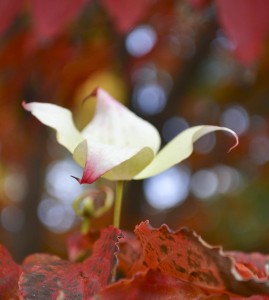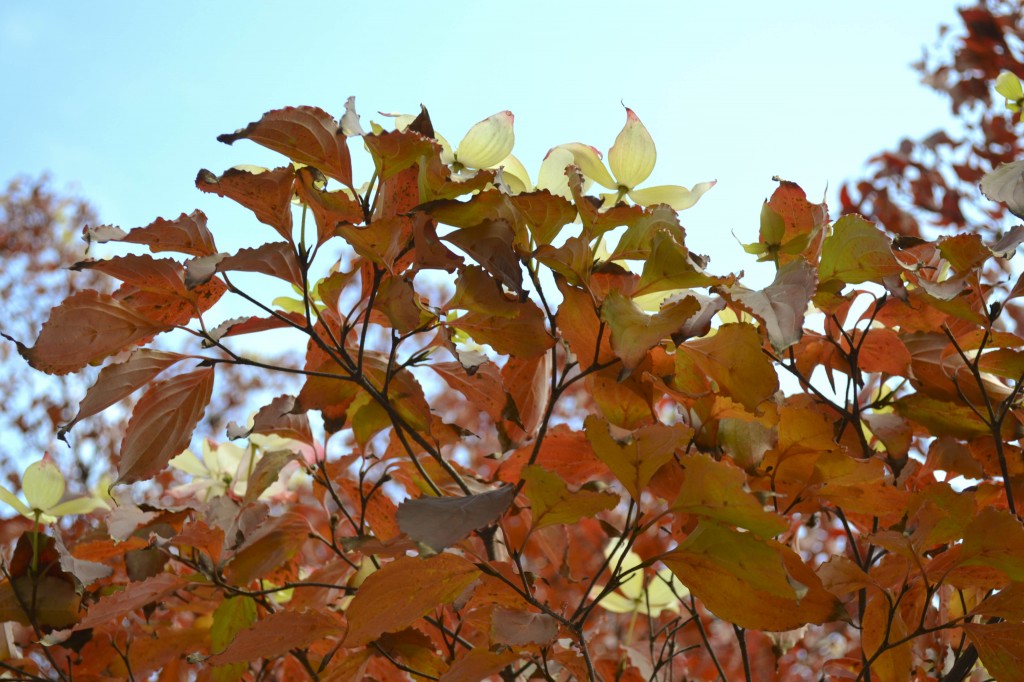Observations from a Strange Year
Posted in Around the Garden on December 27 2011, by Sonia Uyterhoeven
 The other day in Manhattan I passed a man wearing a t-shirt. It has been unseasonably warm this year and this was the confirmation. Throughout the fall and winter, The New York Botanical Garden has been showing similar signs of seasonal displacement and confusion. I would like to spend the next few weeks reflecting on some of the oddities that we experienced in the Garden over the past few months.
The other day in Manhattan I passed a man wearing a t-shirt. It has been unseasonably warm this year and this was the confirmation. Throughout the fall and winter, The New York Botanical Garden has been showing similar signs of seasonal displacement and confusion. I would like to spend the next few weeks reflecting on some of the oddities that we experienced in the Garden over the past few months.
When I was teaching in our newly-restored Forest last month, part of my tour included a flowering Carolina rhododendron (Rhododendron carolinianum). It wasn’t in full flower, however there were several open blossoms scattered throughout the plant.
Rhododendrons and azaleas flower on second year wood. The buds form after the plant flowers and over-winters, then burst forth with color early in spring. The extended wet and warm spell we experienced this fall had caused many of this rhododendron’s buds to swell and some decided it was time to open.
In another section of the Garden the dogwood (Cornus kousa) likewise thought that spring had arrived. A large section was in bloom. Due to all the warm October nights, this flowering dogwood had healthy green foliage when the flowers first opened.
In November we finally had a run of cool autumn nights and the foliage changed to its rich, red autumnal hue. During this time, the flowering native dogwood looked like something of an enigma among the other plants in the area. Its large white bracts shone like neon on top of the claret foliage.

Elsewhere a spirea bloomed in the Perennial Garden and daffodil foliage started to emerge and grow on our Daylily/Daffodil walk. But what are the repercussions of the warm spell that has caused these oddities?
The bulb foliage will need to be covered with pine boughs once the temperature drops to protect them from the winter cold. Next spring the buds that opened this fall on the rhododendron and the flowering dogwood will not re-flower, but the ones that have remained closed and protected will provide a spring show.
Plants are resilient and as long as they are not pushed to their limits they will bounce back. They may show a little wear and tear from the experience, but they should get back on their feet in no time. While this may sound all very human, believe me–these plants do it more gracefully and with a lot less complaining.
One of the nicest parts of gardening is observation; nature is our greatest instructor. Sometimes we learn a great deal about plant care and their seasonal cycles when the weather acts up in strange ways. It also gives us the opportunity to record abnormalities in weather and growth patterns in our gardening journals, which becomes a welcome habit when dealing with the unpredictable nature of the seasons.
At the present we are not dealing with extremes and it seems as though we are ever so slowly heading for winter. It still feels almost as if the coming season is hesitating. Personally, I look forward to snow.
To be continued…

